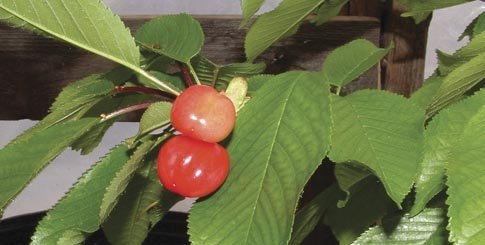
Tom Wood at All Seasons Fruit Co. in Centralia, Washington, began picking his 2008 cherry crop during the first week of April, while many cherry orchards in Washington were still in bloom.
Wood grows a wide range of fruit and vegetable crops under cover and has 1,300 cherry, peach, apricot, plum, and nectarine trees in a 4,200-square-foot greenhouse. Customers come to the farm to buy the fruit, he said. “People just put in an order, and we pick it.”
Wood has cropped his cherry trees twice a year in the past two years, but said the crop was small, and he thinks he would have better luck with self-fertile varieties.
Pruning
He said he still has much to learn about growing trees in a greenhouse, with pruning being one of the greatest challenges. On the other hand, pest control is barely an issue. He applies no sprays, but releases lady beetles to control black aphids late in the summer. He also uses praying mantises for biological control. He’s not seen any mildew on his trees.
He uses honeybees, bumblebees, and mason bees for pollination, and leaves the honeybees in the greenhouse year round. With many different fruits in bloom at various times of the year, there is usually plenty of food for them, he said.
The greenhouse is unheated except for when the outside temperature dips to around 20°F, he said. The greenhouse temperature will stay at 30 to 32°F, even when it’s ten degrees colder outside.

Leave A Comment